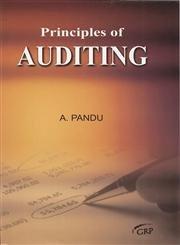Question
Optima Company is a high-technology organization that produces a mass-storage system. The design of Optima's system is unique and represents a breakthrough in the industry.
Optima Company is a high-technology organization that produces a mass-storage system. The design of Optima's system is unique and represents a breakthrough in the industry. The units Optima produces combine positive features of both compact and hard disks. The company is completing its fifth year of operations and is preparing to build its master budget for the coming year (20X1). The budget will detail each quarter's activity and the activity for the year in total. The master budget will be based on the following information: Fourth-quarter sales for 20X0 are 55,000 units. Unit sales by quarter (for 20X1) are projected as follows: First quarter 65,000 Second quarter 70,000 Third quarter 75,000 Fourth quarter 90,000 The selling price is $400 per unit. All sales are credit sales. Optima collects 85% of all sales within the quarter in which they are realized; the other 15% is collected in the following quarter. There are no bad debts. There is no beginning inventory of finished goods. Optima is planning the following ending finished goods inventories for each quarter: First quarter 13,000 units Second quarter 15,000 units Third quarter 20,000 units Fourth quarter 10,000 units Each mass-storage unit uses 5 hours of direct labor and three units of direct materials. Laborers are paid $10 per hour, and one unit of direct materials costs $80. There are 65,700 units of direct materials in beginning inventory as of January 1, 20X1. At the end of each quarter, Optima plans to have 30% of the direct materials needed for next quarter's unit sales. Optima will end the year with the same amount of direct materials found in this year's beginning inventory. Optima buys direct materials on account. Half of the purchases are paid for in the quarter of acquisition, and the remaining half are paid for in the following quarter. Wages and salaries are paid on the 15th and 30th of each month. Fixed overhead totals $1 million each quarter. Of this total, $350,000 represents depreciation. All other fixed expenses are paid for in cash in the quarter incurred. The fixed overhead rate is computed by dividing the year's total fixed overhead by the year's budgeted production in units. Variable overhead is budgeted at $6 per direct labor hour. All variable overhead expenses are paid for in the quarter incurred. Fixed selling and administrative expenses total $250,000 per quarter, including $50,000 depreciation. Variable selling and administrative expenses are budgeted at $10 per unit sold. All selling and administrative expenses are paid for in the quarter incurred. The balance sheet as of December 31, 20X0, is as follows: An account shows the following information for Assets: Cash $250,000, Direct materials inventory 5,256,000, Accounts receivable 3,300,000, Plant and equipment, net 33,500,000, Total assets $42,306,000, Liabilities and Stockholders Equity: Accounts payable $7,248,000*, Capital stock 27,000,000, Retained earnings 8,058,000, Total liabilities and stockholders equity $42,306,000,*For purchase of direct materials only. Optima will pay quarterly dividends of $300,000. At the end of the fourth quarter, $2 million of equipment will be purchased. Required: Prepare a master budget for Optima Company for each quarter of 20X1 and for the year in total. The following component budgets must be included: Sales budget Production budget Direct materials purchases budget Direct labor budget Overhead budget Selling and administrative expenses budget Ending finished goods inventory budget Cost of goods sold budget (Note: Assume that there is no change in work-in-process inventories.) Cash budget Pro forma income statement (using absorption costing) (Note: Ignore income taxes.) Pro forma balance sheet (Note: Ignore income taxes.)


Step by Step Solution
There are 3 Steps involved in it
Step: 1

Get Instant Access to Expert-Tailored Solutions
See step-by-step solutions with expert insights and AI powered tools for academic success
Step: 2

Step: 3

Ace Your Homework with AI
Get the answers you need in no time with our AI-driven, step-by-step assistance
Get Started


